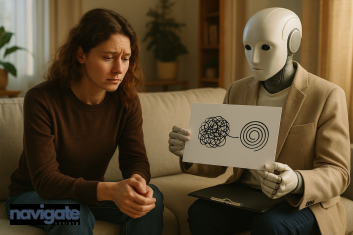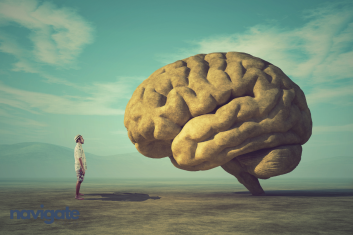Psychoeducation in CBT: Turning Anxiety into Understandable Patterns (Part 3 of our Gold Standard Series)
Posted on: Apr 08, 2025
One of the most transformative moments in Cognitive Behavioral Therapy (CBT) often occurs early in treatment—not during an exposure task or a deep cognitive shift, but during a conversation that explains what anxiety is, how it works, and how therapy will address it. This moment is called psychoeducation, and it's a cornerstone of CBT's effectiveness.
Why Psychoeducation Matters
Anxiety can be a terrifying and isolating experience, especially when it feels unpredictable or uncontrollable. Psychoeducation provides clients with a map of their emotional world. It empowers them to understand their symptoms as part of a well-known pattern rather than as a personal failing or mystery. In doing so, it reduces shame, increases hope, and fosters buy-in for the therapeutic process.
Psychoeducation is not a lecture; it’s a collaborative, engaging process where the therapist shares:
- The difference between normal anxiety and anxiety disorders
- How the fight-flight-freeze system plays a role
- The cognitive model: how thoughts influence emotions and behaviours
- The vicious cycle of avoidance, safety behaviours, and anxious predictions
The Cognitive Model: Thoughts → Feelings → Behaviours
CBT helps clients see how their thoughts aren't just fleeting reactions—they actively shape emotional and behavioural responses. For example:
- Thought: "Everyone at this meeting will think I’m incompetent."
- Emotion: Anxiety, dread
- Behavior: Avoid the meeting or stay silent
This pattern often reinforces the fear ("See? I didn’t speak because I would have embarrassed myself"), locking people into cycles of avoidance. Psychoeducation demystifies this loop and gives clients a language for understanding their inner experiences.
Introducing the Structure of CBT
In addition to teaching about anxiety, therapists use psychoeducation to explain the structure of therapy:
- Active participation: Clients are collaborators, not passive recipients.
- Homework: Change happens between sessions, not just during them.
- Time-limited: CBT is goal-focused and often structured around 12-20 sessions.
- Present-focused: While history may inform beliefs, CBT emphasises current patterns.
Knowing what to expect lowers resistance and aligns therapist and client around clear objectives.
- Tools Used in Psychoeducation
- Diagrams (e.g., the cognitive triangle or vicious cycle of anxiety)
- Handouts and visual aids
- Analogies (e.g., comparing anxiety to a faulty smoke alarm)
- Real-life examples that mirror the client's experience
When done well, psychoeducation shifts the narrative from "What's wrong with me?" to "I see what my brain is doing—and I can do something about it."
Conclusion: Knowledge as a Catalyst for Change
Psychoeducation in CBT transforms anxiety from a monster in the dark to a pattern we can observe, understand, and influence. By starting with insight before intervention, CBT empowers clients to become curious about their experience rather than fearful of it. And that shift in perspective is often the first big step toward lasting recovery.




